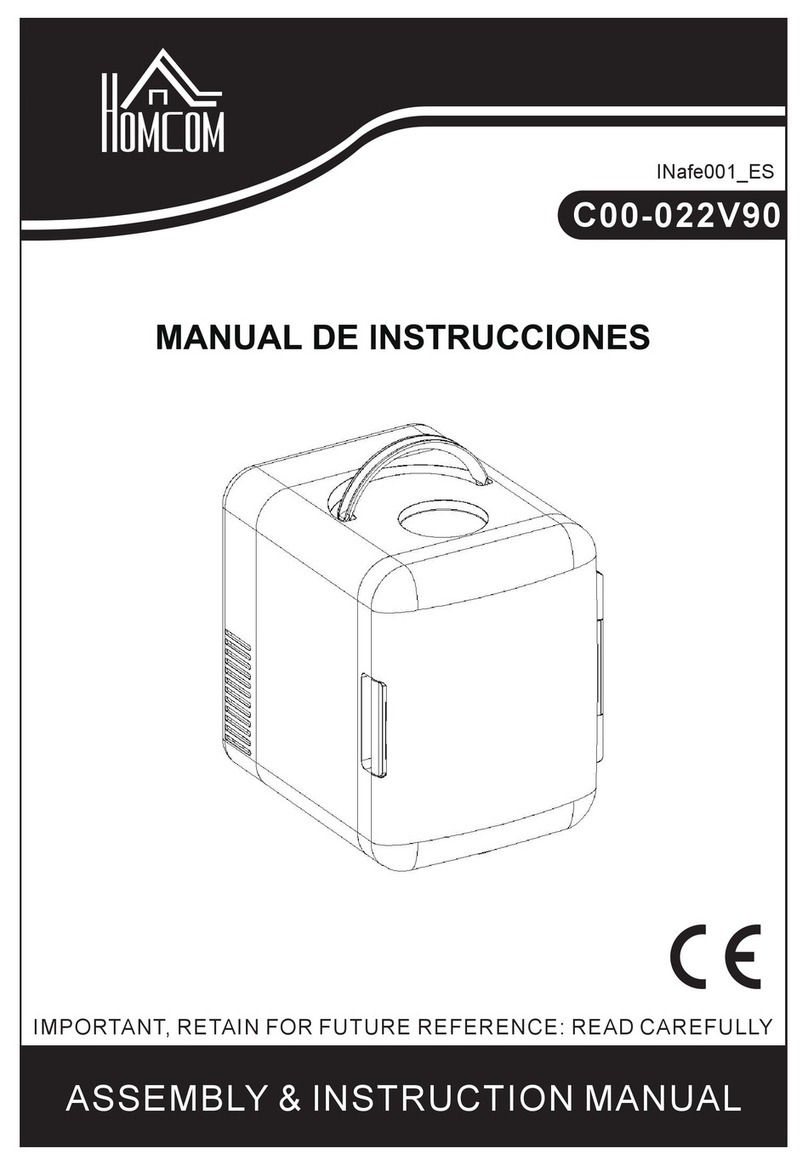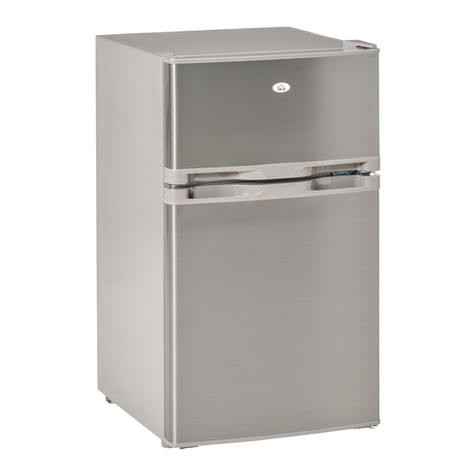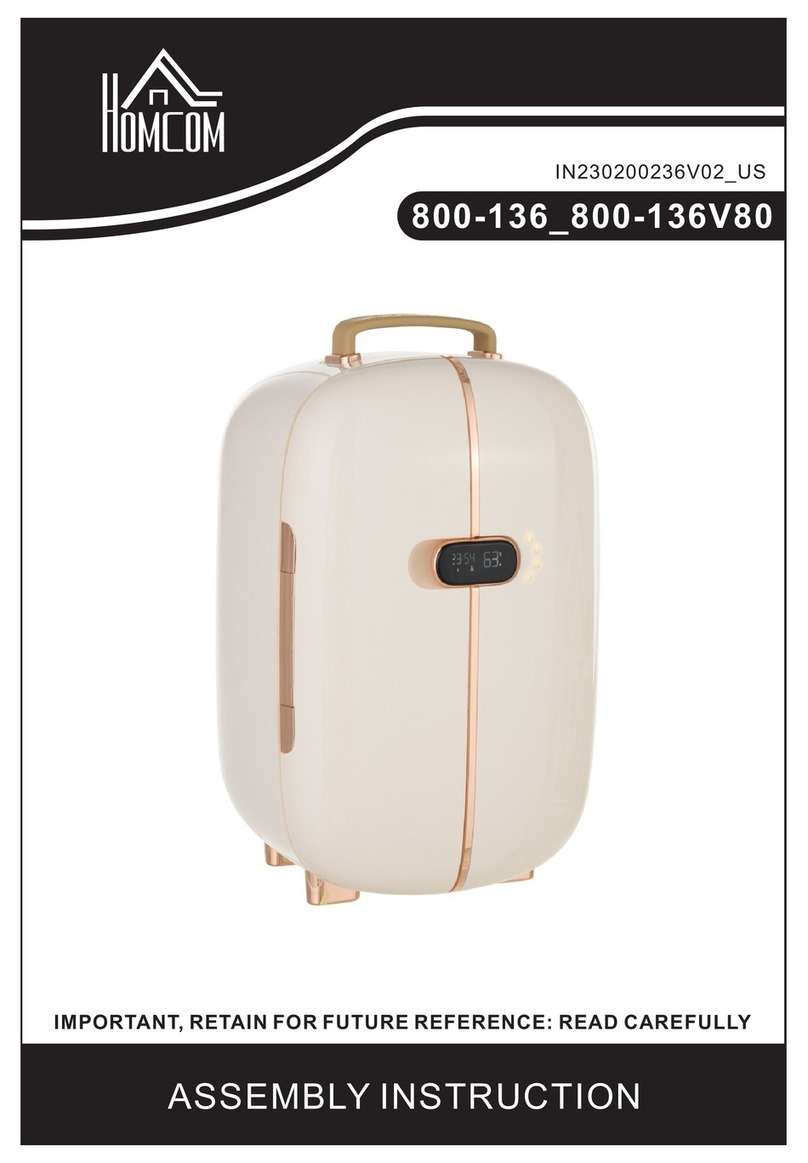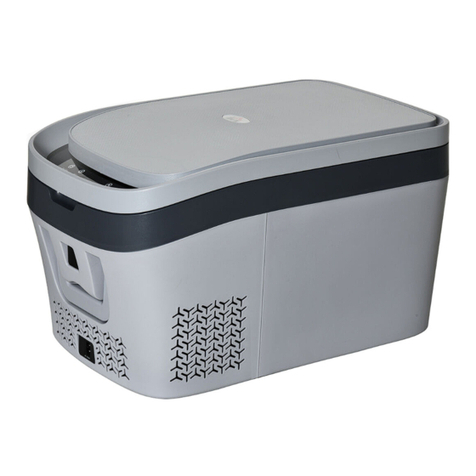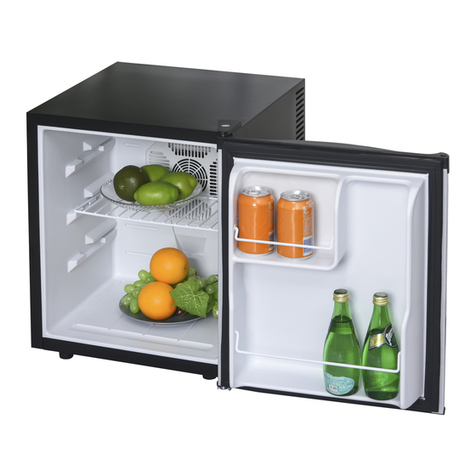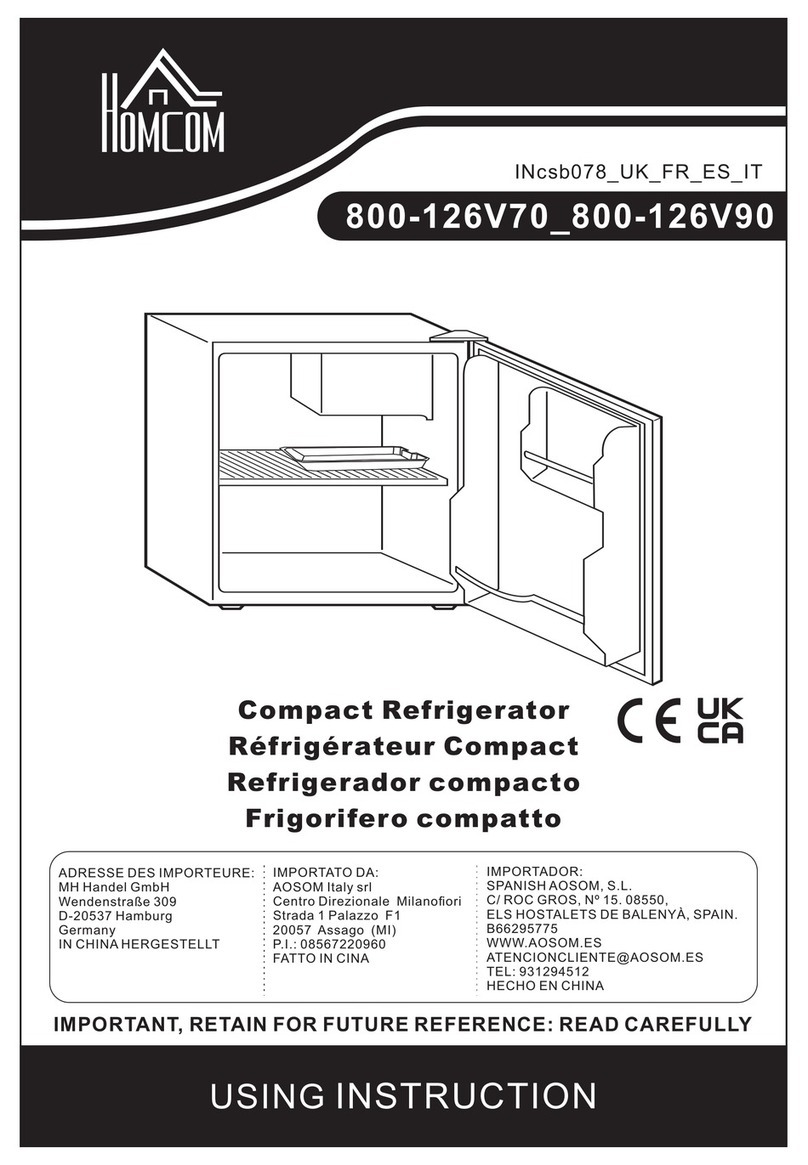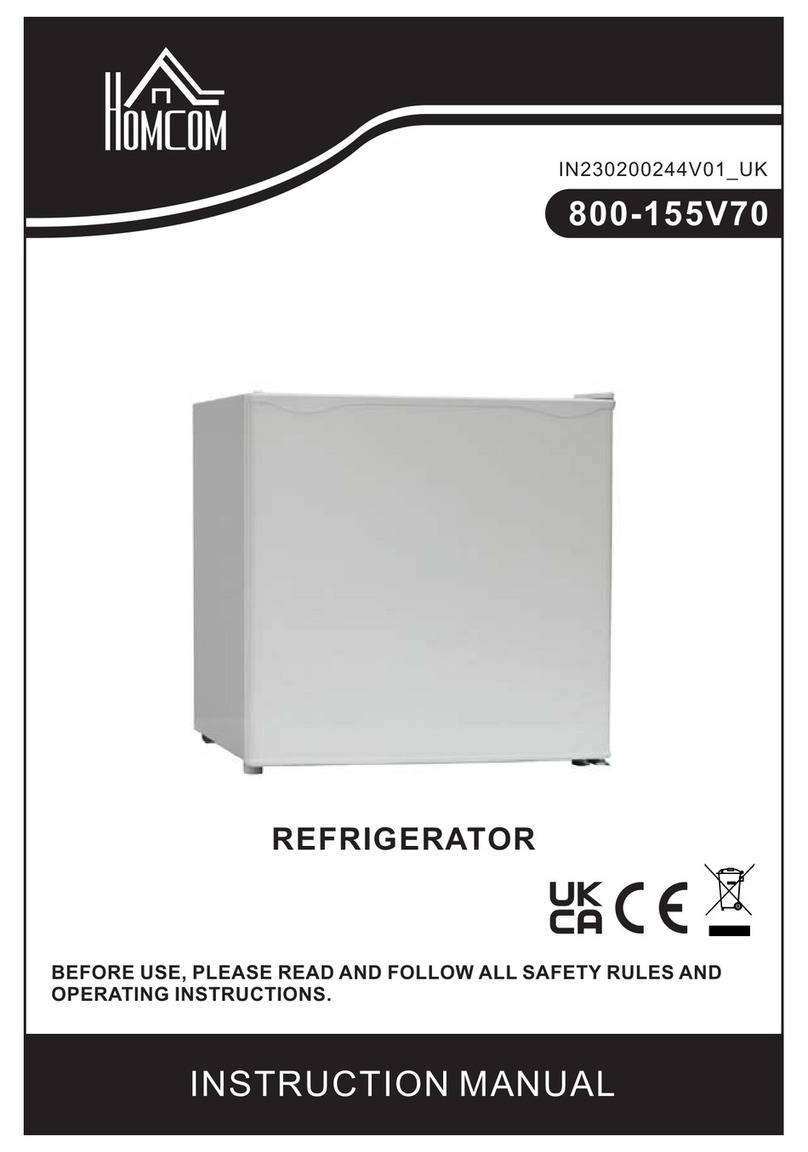
~ 2 ~
This appliance is intended for domestic use only.
Any electrical components (plug, power cord, compressor etc.) must be replaced by a certified service
agent or qualified service personnel.
The light bulb supplied with this appliance is a “special use bulb” intended only for use with the
appliance and should not be used for domestic lighting.
Power cord must not be lengthened.
Ensure the power plug is not squashed or damaged by the back of the appliance as this can cause the
cable to overheat a cause a fire.
Ensure you can access the mains plug of the appliance easily
When unplugging the appliance always pull the plug from the mains socket, do not pull on the cable
If the power plug socket is loose, do not insert the power plug. There is a risk of electric shock or fire.
This appliance is heavy. Care should be taken when moving it.
Do not remove nor touch items from the freezer compartment with damp/wet hands, as this could
cause skin abrasions or frost/freezer burns.
Avoid prolonged exposure of the appliance to direct sunlight.
Daily Use
Do not put hot items on the plastic parts in the appliance.
Do not place food products directly against the rear wall.
Manufactures storage recommendations should be strictly adhered to. Refer to relevant sections in this
manual.
To avoid contamination of food, please observe the following instructions:
Opening the door for long periods can cause a significant increase in the temperature in the
compartment
Regularly clean surfaces that come in contact with food, and accessible drainage systems.
Clean water tanks if they have not been used for 48 hours; flush the water system connected to a water
supply if water has not been drawn for 5 days.
Store raw meat and fish in suitable containers in the refrigerator, to avoid contact with other foods
If the appliance is left empty for long periods, switch off, clean, dry and leave the door open to prevent
mold developing inside.
Care and Cleaning
Before cleaning and maintenance, please ensure you unplug the appliance from the mains supply.
Do not clean the appliance with metal objects.
Do not use sharp objects to remove frost from the appliance. Use a plastic scraper.1
Regularly examine the drain in the refrigerator for defrosted water. If necessary, clean the drain. If the
drain is blocked, water will collect at the bottom of the appliance.2
